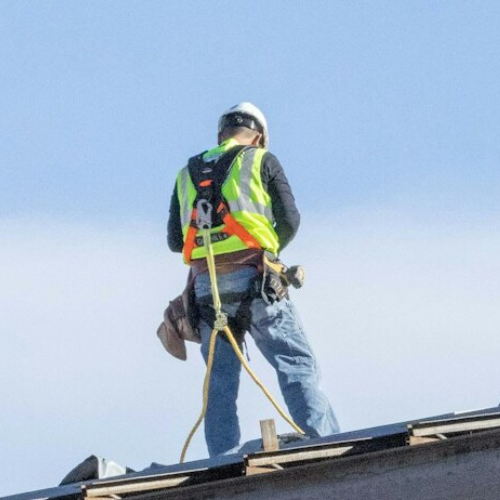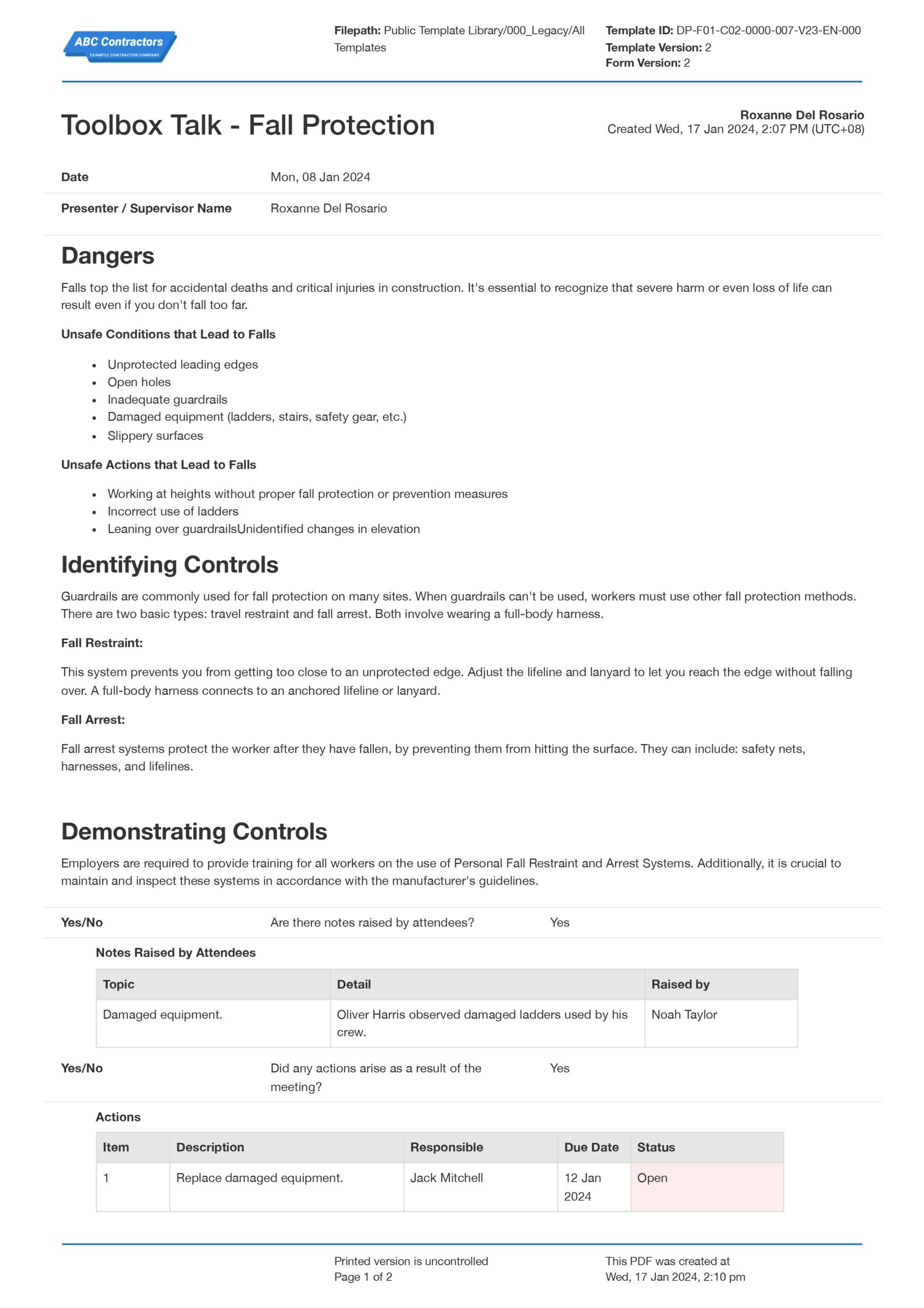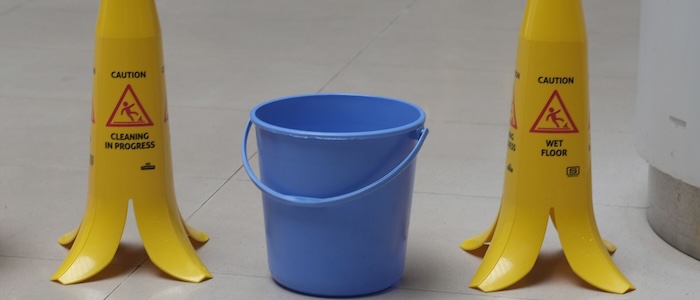Dashpivot Article – Roof Fall Protection
Roof Fall Protection
In this article, we cover all things roof fall protection in the industry. We will also be sharing some roof fall protection resources you can use for your team.

Roof-Related Activities in the Industry
Installing, repairing, and maintaining roofing on residential, commercial, and industrial structures is a critical component of the construction and building sector. It describes the process of covering the upper surface of a structure with a protective layer that protects it from the elements, including sunshine, wind, rain, and snow. Asphalt shingles, metal sheets, tiles, slates, wood shakes or shingles, and synthetic materials like PVC or rubber are some of the materials used in roofing. The temperature in the location where the structure is situated, financial limitations, durability needs, and aesthetic preferences are only a few of the variables that influence the choice of roofing material.
An examination of the current roof structure is usually the first step in the roofing procedure in order to assess its condition and spot any possible problems or damage. This stage aids in figuring out if replacements or repairs are required. After this is finished, the old roof may either be completely removed or fixed before a new one is installed.
Hazards in Roofing that Require Roof Fall Protection
While being an essential part of construction, roofing has some hazards that have the potential to harm workers when doing this activity. It is important to understand these hazards so that the proper safety measures can be placed to eliminate and mitigate these hazards. In this section of the article, we will be discussing the different kinds of hazards found in roofing.
Fall Hazard
Roofing-related operations provide a number of risks, the most significant of which is the risk of falling, particularly on structures that are many stories tall. In addition, buildings that are still in the process of being constructed often have edges that are not covered and parts that are not completed and do not have guard rails. Because of this, there is a significant possibility that workers may fall from great heights. Falls from extreme heights have the potential to inflict substantial injuries to a person's neck, spine, limbs, and brain, as well as to induce internal bleeding and ultimately result in death.
Trip and Slips
When it comes to slips and trips when doing roofing tasks, the most common causes include surfaces on the roof that are slippery, things that appear out of nowhere, sharp edges, and inappropriate housekeeping. For the same reason as the fall hazard, they are more apparent while the structure is still in the process of being constructed. Additionally, these objects have the potential to be a likely reason for someone to lose their sense of balance, which would be problematic on edges that contain fall risks.
Adverse Weather Conditions
Those engaged in roofing activities will be seriously threatened by adverse weather conditions such as temperatures below freezing, which would cause roofing to freeze, heavy snowfall and rainfall, thunderstorms, dense fog, and very windy conditions. In addition to being hazardous near edges, wet and frozen roofs may cause trips and falls. Fog, snowfall, and heavy rain may all impair vision, which might be hazardous for workers. Lightning is produced by thunderstorms and often occurs in high areas. In the event of a thunderstorm, roofs are hazardous locations. When employing hanging scaffoldings, strong winds may force individuals to sway, which might be unsafe and result in harness failure.
Heat Stress
In tropical countries, individuals working on the roof might be exposed to the sun for a long period of time. This situation can potentially increase the risk of heat stress. Heat stress arises when the body is unable to eliminate excess heat. A rise in the core temperature of the body and an increase in the heart rate are both observed when this occurs. As the body continues to retain heat, the individual may begin to feel groggy and lose consciousness. Additionally, they may become angry or nauseous, and they frequently lose the urge to drink. If the individual is not brought down to a cooler temperature, the subsequent step is typically passing out and even death. The presence of high air temperatures, radiant heat sources, high humidity, direct physical contact with hot items, and vigorous physical activities are all factors that lead to heat stress.
Improper Tools and PPE
When employing tools, people may sometimes be creative, particularly if the necessary instruments are not available. To reduce delays brought on by unavailable tools, they often make do with the tools that are on hand. Unfortunately, safety may also be jeopardised by such an act. Here is an example that illustrates these kinds of activities to assist you to understand them. On a steep roof, a person on the roofing team is changing the shingles. He is wearing a safety harness, but there are no approved and sturdy anchor points nearby. Rather than waiting for the right tools, he chooses to fasten his lanyard to a PVC pipe. The employee unintentionally slid and lost his equilibrium halfway through the task. His fall caused the PVC pipe to break since it could no longer sustain his weight. We can confirm with this example that it is never acceptable to sacrifice safety in order to complete a task faster.
Awareness on Roof Fall Safety
You are now aware of the risks associated with roofing. Now all you need to do is share this helpful information with your colleagues. Toolbox talks are the most effective way to disseminate this information. Toolbox talks are brief, unofficial gatherings that focus on safety issues to improve workplace security. Employees may also use this area to express any safety concerns or difficulties they may have encountered while working. These issues will then be developed together with solutions to ensure the health and safety of employees. Making a toolbox tool form is a prerequisite for having a successful toolbox talk. As a guide for the conversation, this form should include the main subject and any relevant subtopics. Since the toolbox form serves as both a reference and a record that may be used to illustrate workplace safety practices during regulatory audits, it also includes a space for workers who attended the meeting to sign and voice any concerns they may have had. To help you picture what a toolbox form should look like, we have given you an example of one on roof fall safety. You may also make your forms using the free template that is provided below.
Roof Fall Protection Awareness

Use this free Roof Fall Safety Talk
Roof Fall Protection
In this section of the article, we will be imparting what OSHA requires on roof fall protection. Here are the given OSHA requirements on roof fall Protection:
Roof Fall Protection - Personal Fall Arrest System (PFAS)
An example of fall protection is a personal fall arrest system (PFAS). As per 29 CFR 1926.502(d)(16)(iii), fall arrest devices must prevent workers from falling more than 6 feet or hitting the ground or floor. Proper usage of these devices prevents workers from falling to lower levels. A PFAS includes an anchor, harness, and lifeline/lanyard (typically with a deceleration mechanism). Proper usage of PFAS is essential for effectiveness.To do this, one must adjust the harness snugly. Place the harness D-ring between the worker's shoulder blades and tighten the leg straps to a secure fit. Fall arrest system anchorages must support 5,000 pounds per worker or be designed, installed, and used under qualified supervision within a complete personal system with a safety factor of at least two (29 CFR 1926.502(d)(15)). Avoid attaching OSHA anchors to sheathing, single trusses, or guardrails during roofing construction. These are usually not robust enough to fulfil OSHA standards. To connect anchors to a structural component, drive fasteners through the sheathing and into the rafter or truss member below. Please follow the manufacturer's directions for anchoring installation.
Fall Restraint System
Employers have the ability to safeguard their employees from fall dangers by using a fall restraint system. Workers are prevented from reaching the edge of the walking/working area by a fall restraint system, even in the event that they lose their balance and slide over the surface. As a recommendation from the Occupational Safety and Health Administration (OSHA), fall restraint systems should be able to resist 3,000 pounds, which is twice the maximum estimated force that is required to prevent an employee from being exposed to a fall hazard. When employers utilise fall restraint devices to prevent workers from reaching exposed sides or edges, they are required to provide workers with training on how to calculate the suitable lanyard length before they begin working.
Guardrail System
Guardrail systems must have top rails 39-45 inches above the walking/working surface (29 CFR 1926.502(b)(1)). For areas without a 21-inch wall or parapet wall, intermediate structural components such as midrails or screens must be placed (29 CFR 1926.502(b)(2)). Installation of midrails must be halfway between the guardrail system's top edge and the walking/working surface (29 CFR 1926.502(b)(2)(i)). Guardrails must resist 200 pounds in either direction within 2 inches of the top edge (29 CFR 1926.502(b)(3)).
Midrails, screens, mesh, intermediate vertical parts, solid panels, and analogous structural elements must resist 150 pounds in either direction (29 CFR 1926.502(b)(5)). Surface guardrails to prevent punctures, lacerations, and clothing snagging (29 CFR 1926.502(b)(6)).
Warning Lines and Safety Monitors
Employers have the option of utilising a combination of a warning line system and a guardrail system, a warning line system and a safety nett system, a warning line system and a personal fall arrest system, or a warning line system and a safety monitoring system in order to protect their employees from falling while they are engaged in roofing activities on low-slope roofs. Alternatively, the use of a safety monitoring system all by itself is permissible on rooftops that are less than or equal to 50 feet (15.25 metres) in width (29 CFR 1926.501(b)(10)). [29 CFR 1926.500(b)] stipulates that the safety monitor must always be a qualified individual.
Rescue
When using personal fall arrest devices, employers must have a strategy in place for how to rescue employees in the case of a fall. Although a personal fall arrest device may save a life, if the fallen worker is not rescued right once, a medical emergency like suspension trauma may occur. Without help, a fallen worker may not be able to get to a safe work surface. Before beginning the task, the availability of rescue workers, ladders, and other rescue supplies should be assessed. Employers must guarantee that workers and managers get training on how to rescue a fallen employee. Rescues must be carried out safely and quickly in order to stop more harm (29 CFR 1926.502(d)(20)).

Toolbox Talk Slips Trips and Falls
Manage your team's safety with regards to slips, trips and falls with this Toolbox Talk template.

Toolbox Talk Ladder Safety
Keep any work involving ladders safe by running this Toolbox Talk Ladder Safety.

Job Hazard Analysis Roofing
Create safe work processes by using this free JHA Roofing template for your next Roofing project.

